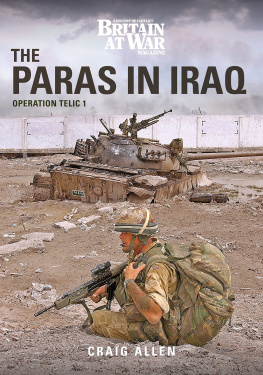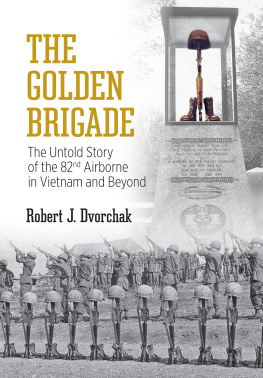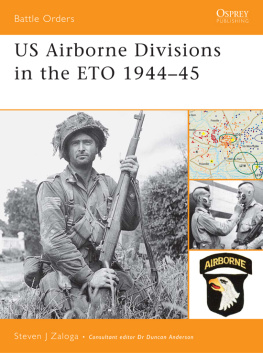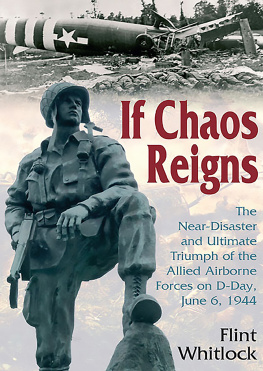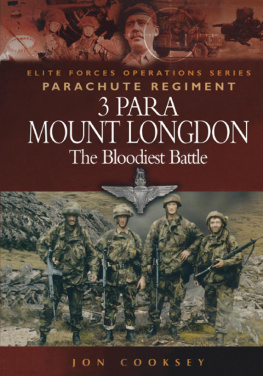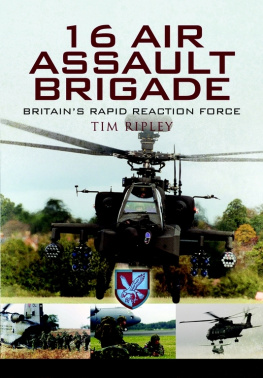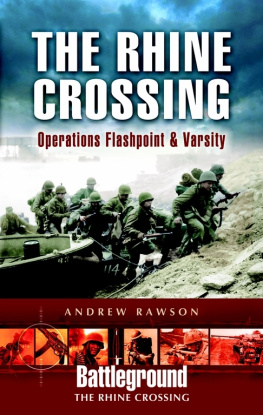F IGHTING B RIGADIER
T HE L IFE & C AMPAIGNS OF B RIGADIER J AMES H ILL DSO** MC
Why do I refer to myself as a fighting brigade commander as there are obviously many others?
The reason is: the number of men in a parachute brigade was very limited. Our organisation was simple and my Brigade Headquarters had an 80-strong defence platoon; in total, therefore, we numbered some 180 fighting men. It was always my plan in defence to place my headquarters in such a position that its officers and men could actively participate in any defensive action. This made a significant contribution when the line was thin or stretched.
Moreover, I always considered that any commander up to brigade level in a parachute formation should always lead from the front always with the proviso, however, that he can maintain control of his battle.
James Hill
F IGHTING B RIGADIER
T HE L IFE & C AMPAIGNS OF B RIGADIER J AMES H ILL DSO** MC
BY
P ETER H ARCLERODE
Other Titles by Peter Harclerode
Go To It! The Illustrated History of The 6th Airborne Division
Unholy Babylon The Secret History of Saddams War
(as Gregory Alexander with Adel Darwish)
PARA! Fifty Years of The Parachute Regiment
Arnhem A Tragedy of Errors
The Lost Masters The Looting of Europes Treasurehouses
(with Brendan Pittaway)
Equinox: Warfare
Secret Soldiers Special Forces in The War Against Terrorism
Fighting Dirty The Inside Story of Covert Operations From Ho Chi Minh
to Osama bin Laden
Gurkha The Illustrated History (with David Reynolds)
Wings of War Airborne Warfare 19181945
First published in Great Britain in 2010 by
Pen & Sword Military
An imprint of
Pen & Sword Books Ltd
47 Church Street
Barnsley
South Yorkshire
S70 2AS
Copyright Peter Harclerode 2010
ISBN 978 1 84884 214 4
eISBN 978 1 52673 918 6
Mobi ISBN 978 1 52673 919 3
The right of Peter Harclerode to be identified as Author of this work has been asserted by him in accordance with the Copyright, Designs and Patents Act 1988.
A CIP catalogue record for this book is available from the British Library.
All rights reserved. No part of this book may be reproduced or transmitted in any form or by any means, electronic or mechanical including photocopying, recording or by any information storage and retrieval system, without permission from the Publisher in writing.
Pen & Sword Books Ltd incorporates the imprints of Pen & Sword Aviation, Pen & Sword Family History, Pen & Sword Maritime, Pen & Sword Military, Wharncliffe Local History, Pen & Sword Select, Pen & Sword Military Classics, Leo Cooper, Remember When, Seaforth Publishing and Frontline Publishing.
For a complete list of Pen & Sword titles please contact
PEN & SWORD BOOKS LIMITED
47 Church Street, Barnsley, South Yorkshire, S70 2AS, England
E-mail:
Website: www.pen-and-sword.co.uk
Foreword
By Lieutenant General Sir Michael Gray KCB OBE DL
Former Colonel Commandant The Parachute Regiment.
Current Joint President of The Airborne Assault Normandy Trust
When you read this truly remarkable narrative about one mans campaigns, you may be forgiven for thinking that the oft-used 1940s expression He had a good war was apposite. I am sure that Brigadier James Hill would not have agreed with you. Total war is exacting: hundreds of his men were killed and maimed in action while he himself was severely wounded and close to death on two occasions, and winged by a grenade on a third. He might have agreed, however, that because he survived, luck was on his side, but I suspect that he made quite a lot of that luck for himself. He also believed most fervently that the Almighty kept a watchful eye on him.
James was involved at the forefront of history for six years of almost continuous fighting at senior rank. As a leader he was able to have a direct, personal influence on events and in particular on the development of Airborne tactics and training.
When you have read this book you may also be forgiven for imagining that here was a rough tough warrior who enjoyed the cut and thrust of combat. You would be wrong. Certainly he excelled in battle, as did the men he trained and led, but James was in fact one of lifes true gentlemen, who was thoughtfully modest and quietly but precisely spoken. He was also a fitness fanatic and his battle discipline was fierce and exacting, because he wanted his officers and young men to survive both in mind and body. He dearly loved his soldiers (his words) and he knew that he had to harden their hearts if they were to cope with the traumas they would experience almost every day. All who served with him trusted his judgement, especially in battle, because they knew he would be there with them. Thereafter, as the years passed, he continued to be held in awe and deep respect by all of the men in his brigade and by others besides.
James was an exceptional Airborne leader who became a legend in his own lifetime. In modern times there can be few brigade commanders who, for example, have fought their brigades continuously for five weeks on offensive mobile operations across 275 miles of hostile territory. After crossing the River Rhine into Germany, 6th Airborne Division, as a leading element of the Allied armies, sped northwards to Wismar, on the Baltic, to meet up with the advancing Russians; for political reasons speed was necessary to block their westward advance. James Hills 3rd Parachute Brigade was the leading formation for most of this long journey, with James himself well forward on the back of a motorcycle with his signaller!
As the war drew to a close, James was despatched to take command of 1st Parachute Brigade, a formation comprising those remnants of 1st Airborne Division that had survived the Arnhem debacle. It was sent to secure Denmark and prevent it falling prey to Russian occupation. On his arrival, James was appointed as Military Governor of Copenhagen. His tenure of command there was short, however, and in June 1945 he returned to Britain where, during the following month, he supervised the disbanding of the brigade.
James then retired to civilian life, at the age of only 35. Shortly after he left the Army, however, he was summoned by the then Colonel Commandant of The Parachute Regiment, Field Marshal the Lord Montgomery, who invited him to raise a Territorial Army Airborne formation in London. As a result, the 4th Parachute Brigade TA started life in 1947 and James was appointed to command it. Subsequently, it became 44th Independent Parachute Brigade Group (TA).
Jamess many subsequent commitments to The Parachute Regiment and his life as an accomplished international businessman are well documented in this book. He seldom missed a regimental or Old Comrades gathering either with Airborne Forces, or indeed with his parent regiment, The Royal Fusiliers. In particular, he had a personal warmth for his much-loved veterans of 1st Canadian Parachute Battalion and they for him. As well as going to enormous lengths to record his wartime memories and pass on his military wisdom to Airborne Forces gatherings and to the Army Staff College, he also participated in numerous battlefield tours on the ground in Normandy and across the Rhine.


